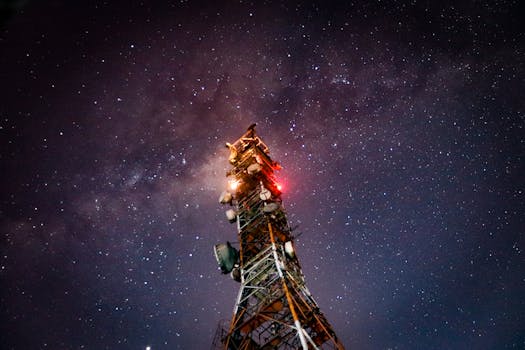
MEO Satellites: Revolutionizing Global Communication with Medium Earth Orbit Technology
MEO satellites, or Medium Earth Orbit satellites, are a type of satellite that operates in an orbit between 2,000 and 36,000 kilometers above the Earth’s surface. This orbit is significantly lower than the Geostationary Orbit (GEO) used by traditional satellites, which are located at an altitude of approximately 36,000 kilometers. The lower orbit of MEO satellites allows for faster and more reliable communication, making them an attractive option for a wide range of applications, including telecommunications, navigation, and Earth observation.
The use of MEO satellites is becoming increasingly popular due to their ability to provide high-speed and low-latency connections. This is particularly important for applications that require real-time communication, such as video conferencing, online gaming, and financial transactions. MEO satellites are also more resistant to interference and signal degradation, making them a more reliable option for critical communication systems.
How MEO Satellites Work
MEO satellites work by transmitting and receiving signals to and from Earth stations, which are located on the ground. The satellites use a combination of antennas and transponders to amplify and re-transmit the signals, allowing them to be received by other Earth stations or by other satellites. MEO satellites typically operate in the Ka-band or Ku-band frequency range, which provides a high level of bandwidth and capacity.
One of the key benefits of MEO satellites is their ability to provide global coverage with a relatively small number of satellites. This is because the lower orbit of MEO satellites allows them to cover a larger area of the Earth’s surface, reducing the number of satellites required to provide global coverage. This makes MEO satellites a more cost-effective option for many applications, particularly those that require global coverage.
Applications of MEO Satellites
MEO satellites have a wide range of applications, including telecommunications, navigation, and Earth observation. In the telecommunications sector, MEO satellites are used to provide broadband internet access, mobile phone services, and other communication services. They are particularly useful for providing coverage in remote or underserved areas, where traditional communication infrastructure may not be available.
In the navigation sector, MEO satellites are used to provide location information and timing signals, which are used by a wide range of applications, including GPS, aviation, and maritime. MEO satellites are also used for Earth observation, providing high-resolution images of the Earth’s surface and atmosphere, which are used for a wide range of applications, including weather forecasting, climate monitoring, and disaster response.
Future of MEO Satellites
The future of MEO satellites looks bright, with a growing demand for high-speed and low-latency communication services. The development of new technologies, such as 5G and the Internet of Things (IoT), is driving the need for faster and more reliable communication systems, and MEO satellites are well-positioned to meet this demand.
In addition, the development of new satellite constellations, such as OneWeb and Amazon’s Kuiper Systems, is expected to further increase the use of MEO satellites in the coming years. These constellations will provide global coverage and will be used for a wide range of applications, including telecommunications, navigation, and Earth observation.




